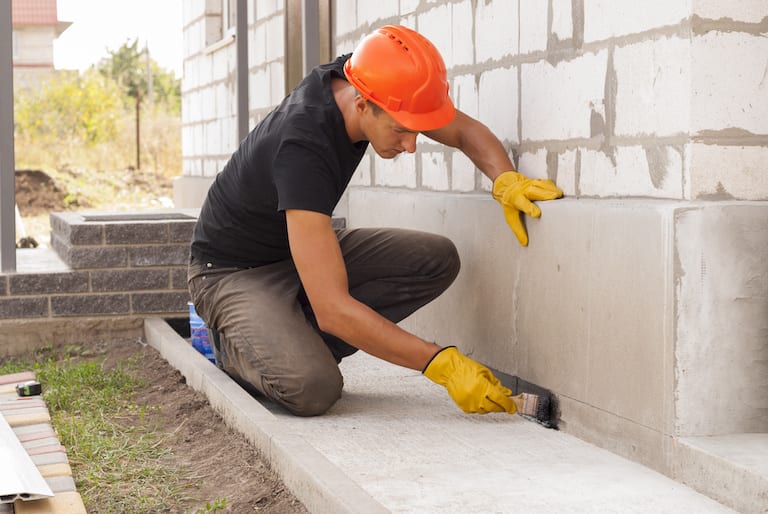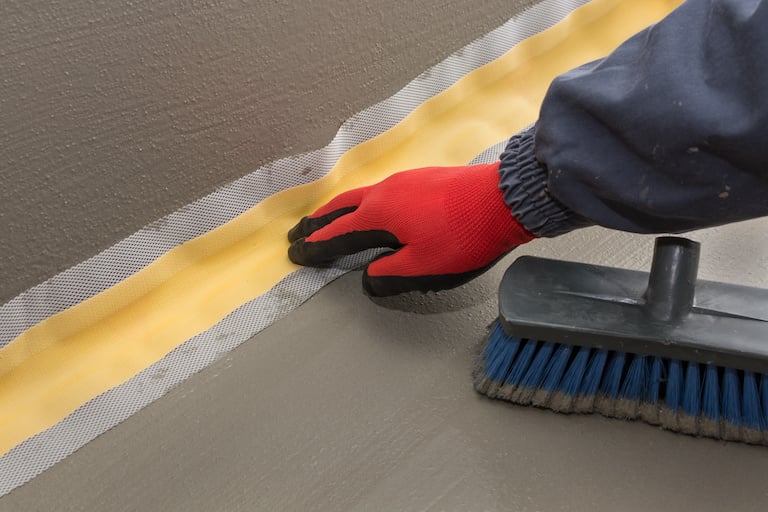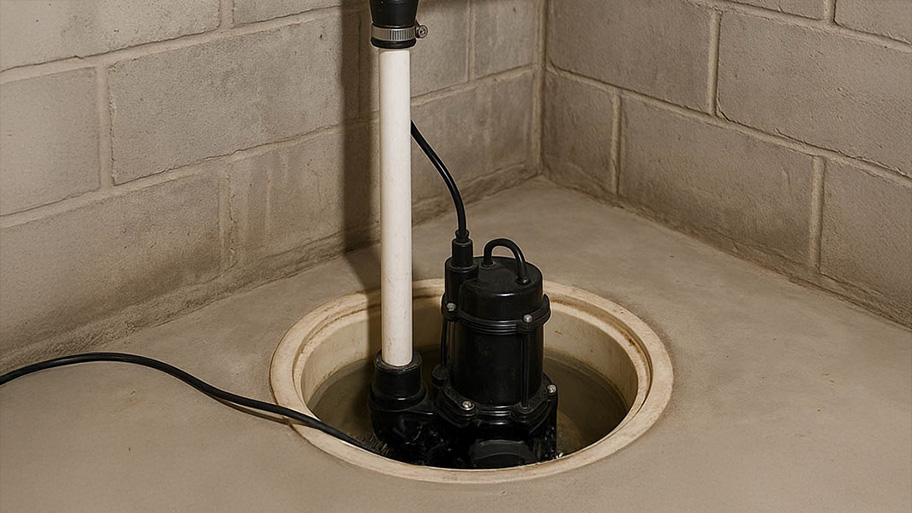
Need to fix basement water problems or safeguard your home from damage in the future? Use this basement waterproofing cost guide to budget appropriately.
Protect your home’s foundation from the bottom up


Plumbing leaks, hydrostatic pressure, clogged gutters, or poor yard grading could cause basement flooding.
Other potential causes include sewer backups, poor sealing, or a broken sump pump.
A basement waterproofing pro can identify the cause of your basement flood and fix the issue to prevent future leaks.
Walking down your basement stairs after heavy rainfall only to find it flooded is every homeowner’s nightmare. Basement flooding can be a time-consuming and expensive repair, and over time, it can cause structural damage to the home. But heavy rain isn’t the only potential cause of a basement flood. This guide explains what causes basement flooding, from poor grading to a broken sump pump.
Sometimes, a flooded basement is caused by plumbing leaks. This is more likely to be the cause if you have a washing machine or bathroom installed in your basement; however, a leak from elsewhere in the house could also cause a basement flood due to gravity.
If you suspect a plumbing leak, turn off the water main to prevent further damage. Then, look for the source of the water to determine the next steps. If it’s a leaking appliance, you’ll need to repair or replace it. Leaking pipes will likely need a local plumber to identify the source and perform the repair. Pipe repair costs an average of $500.
Because basements are built below the ground, they’re susceptible to leaks caused by hydrostatic pressure from standing groundwater. Standing groundwater can put pressure on the exterior walls of your basement. If your basement isn’t adequately sealed or you have cracks in the walls, this can lead to leaks.
The fix for this problem depends on the exact cause of the hydrostatic pressure. If it’s caused by poor drainage, call a foundation drain installation expert near you for advice. A landscaping pro can help if the pressure is caused by improper yard grading.
You might not think of your gutters as the culprit, but if they’re clogged, they can cause water to leak into your basement. That’s because clogged gutters will overflow, directing water down to your home’s foundation. Even if your basement is well-sealed, it may not be able to withstand the pressure of a sudden influx of water.
Clean out your gutters regularly—at least once a year, but ideally twice. You may be able to do this yourself with the right equipment, but it’s often best to hire a gutter cleaning pro near you to ensure the job is done safely. Professional gutter cleaning costs $120 to $235.
If your yard slopes toward your foundation rather than away from it, your basement is more likely to experience flooding. Yards should be sloped away from the home to allow water to drain away and prevent foundation issues, such as a leaking basement or a significant structural problem.
Hire a local landscape grading professional to adjust the slope of your yard. This project can be a significant undertaking that requires heavy machinery and an experienced team to ensure it’s completed correctly. Leveling a yard costs between $1,030 and $3,340.
In some cases, basement flooding can be caused by a sewer backup. Backups occur when the sewer system is overwhelmed, such as during a heavy rainstorm, or if there’s a clog in the system. A sewer backup can also happen if tree roots, grease, or waste block your home’s sewer pipes.
Sewer problems are best left to a sewer pro near you who understands how the system works and how to fix the issue correctly. Sewer line replacement costs $1,400 to $5,325 on average.

When a home is first constructed, the builders should seal the foundation adequately to prevent leaks or to fix a leaky basement. However, this seal can wear down, causing water leaks or flooding. Older homes may not have had their basements sealed, leaving them more vulnerable to leaks.
Check your basement’s interior walls for cracks, and apply sealant if you find any. You can also hire a basement waterproofing company near you to inspect and seal your basement as needed. If moisture has damaged your foundation, expect to pay around $5,000 in foundation repair costs.
Many basements have sump pumps installed to help remove excess groundwater from around your foundation. If your sump pump breaks, your basement is more likely to flood.
Check your sump pump to see if it’s functioning properly. If it’s not, call a local sump pump repair professional to inspect the system and determine whether it can be repaired or needs to be replaced instead. Sump pump replacement costs an average of $525.
According to data from Angi, about 58% of homeowners want to repair their sump pumps within 1 to 2 days, and another 26% want the work done within 2 weeks, highlighting that most of these requests are emergencies or very urgent. Roughly 13% of homeowners were unsure or still in the planning and budgeting process, while only 3% could wait more than 2 weeks.

A minor basement leak after heavy rainfall may not need the help of a pro to resolve. However, you should take even small basement leaks seriously because they could lead to more significant flooding in the future.
If you’re concerned about your basement’s water resistance or notice large cracks on the foundation walls, a local basement waterproofing expert can determine the issue and recommend the proper fix to keep your basement watertight moving forward.
From average costs to expert advice, get all the answers you need to get your job done.

Need to fix basement water problems or safeguard your home from damage in the future? Use this basement waterproofing cost guide to budget appropriately.

Crawl space repair costs can seem intimidating, but putting them off can lead to bigger issues. Learn about repair costs in this guide to set your budget.

Sump pump replacement costs depend on the type of unit you have and the cost of labor, which varies by region. Read on to find out more about what to expect.

Dealing with a damp crawl space? Use these eight simple tips to get rid of the moisture and water-related problems once and for all.

Learn what home flood detection systems are, how they work, where to install them, and why they can help minimize water damage in your home with this guide.

If you have water in your basement, knowing who to call and when can make the difference between a quick solution and worsening property damage.